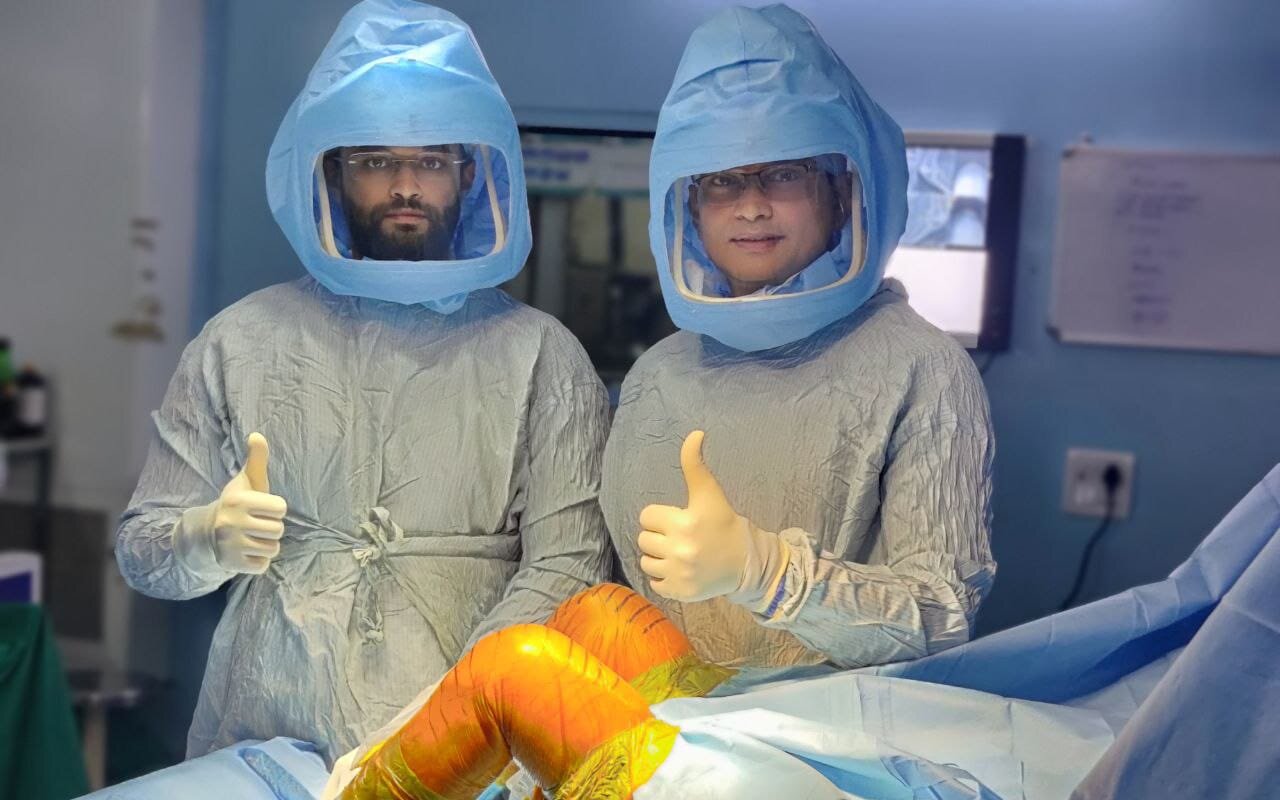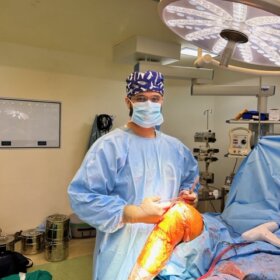Knee Replacement
If your knee is severely damaged by arthritis or injury, it may be hard for you to perform simple activities, such as walking or climbing stairs. If your knee ligaments ache or have been seriously damaged, you may even begin to feel pain while you are sitting or lying down. All these problems lead to unbearable chronic pains in your knee portion.
If nonsurgical treatments like medications and using walking supports are no longer helpful, you may want to consider total knee replacement surgery. Joint replacement surgery is a safe and effective procedure to relieve pain, correct leg deformity, and help you resume normal activities. Sanjivan Hospital is considered to be the best hospital in Nashik for joint replacement surgeries.
Knee replacement surgery was first performed in 1968. Since then, improvements in surgical materials and techniques have greatly increased its effectiveness. Total knee replacements are one of the most successful procedures in all of medicine. According to the Agency for Healthcare Research and Quality, more than 600,000 knee replacements are performed each year in the United States.
Whether you have just begun exploring treatment options or have already decided to have total knee replacement surgery, this article will help you understand more about this valuable procedure of ‘Knee Replacement’.
A knee replacement (also called knee arthroplasty) might be more accurately termed a knee “resurfacing” because only the surface of the bones is actually replaced.
There are four basic steps to a knee replacement procedure.
- Prepare the bone: The damaged cartilage surfaces at the ends of the femur and tibia are removed along with a small amount of underlying bone.
- Position the metal implants: The removed cartilage and bone are replaced with metal components that recreate the surface of the joint. These metal parts may be cemented or “press-fit” into the bone.
- Resurface the patella: The undersurface of the patella (kneecap) is cut and resurfaced with a plastic button. Some surgeons do not resurface the patella, depending upon the case.
- Insert a spacer: A medical-grade plastic spacer is inserted between the metal components to create a smooth gliding surface.
The following are the illustrations of severe osteoarthritis and knee replacement procedure:
(Left) Severe osteoarthritis. (Right) The arthritic cartilage and underlying bone has been removed and resurfaced with metal implants on the femur and tibia. A plastic spacer has been placed in between the implants. The patellar component is not shown for clarity.
Orthopedic Evaluation
A thorough evaluation with an orthopedic surgeon will determine whether you are a good candidate for a knee replacement. The Orthopedic surgeons of Sanjivan Hospital, Nashik are highly experienced and thoroughly trained to perform knee replacement surgeries. One of our orthopedic surgeons, Dr. Umesh Kulkarni, has performed over 3000 major surgeries including 800 joint replacement surgeries. He has been trained for advanced training in knee operations and orthopedic procedures at a Hospital for Special Surgery, New York. He got brilliant opportunities to work with renowned joint replacement surgeons, Dr. Russel Warren from the U.S.A. He has a huge experience in solving many complicated cases over the last 22 years, where he flourished with positive results in patients. He keeps himself updated with the latest advances in the world of medicine and technology by attending numerous national and international conferences. We suggest you take medical help from him or any kind of assistance your joints need for a healthy and happy life. He is one of the best for knee replacement surgeries in Nashik


